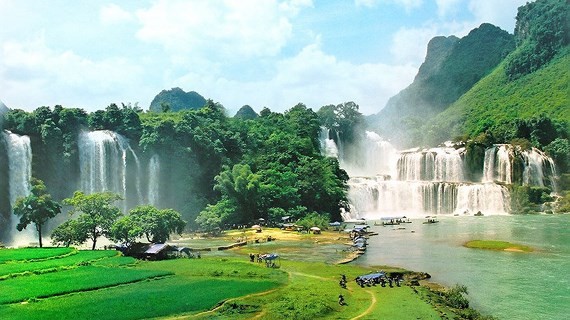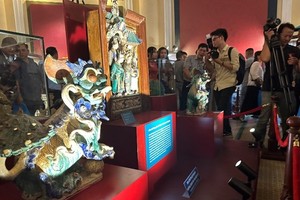
Non Nuoc Cao Bang Geopark, 300km from Hanoi, covers an area of 3,000km2, spreading over 6 districts of Cao Bang province including Ha Quang, Tra Linh, Quang Uyen, Trung Khanh, Ha Lang, Phuc Hoa, part of Hoa An, Nguyen Binh, and Thach An.
This park is well-known for its biological diversity, abundant endemic flora-fauna species and ecosystems.
The geopark is land of fossils, ocean sediment, volcanic rocks, minerals, vestiges of biosphere extinction and especially karst landscapes.
The park is home of around 250,000 local people of 9 ethnic minority groups. Scientists have found more than 130 special geological heritages which are shaped in pyramid, cone, valleys, caves, and systems of lakes, river an underground cave.
It is also home to many tangible and intangible cultural heritages, such as Phia Oac - Phia Den National Park, Thang Hen lake, Nguom Ngao Cave; especially the grandiose and beautiful Ban Gioc Falls, nearing the Chinese-Vietnamese border. The waterfall is more than 200 meters high and 60 meters wide, falls thirty meters. It is separated into three falls by rocks and trees.
There is also the special national relic site of Pac Bo where President Ho Chi Minh returned in 1941 to lead the revolutionary movement after spending over 30 years abroad; special national relic site of Tran Hung Dao Forest where General Vo Nguyen Giap established the Vietnam Propaganda and Liberation Army (the predecessor of the Vietnam People’s Army today) in 1944.
This is the second UNESCO-recognized Global Geopark in Vietnam.
In 2010, Dong Van Stone Plateau in Ha Giang province was recognized as a member of the Global Network of National Geoparks (GGN) and became the Vietnam ’s first geological park and only the second geological park in Southeast Asia, after the Langkawi Geological Park in Malaysia.
























